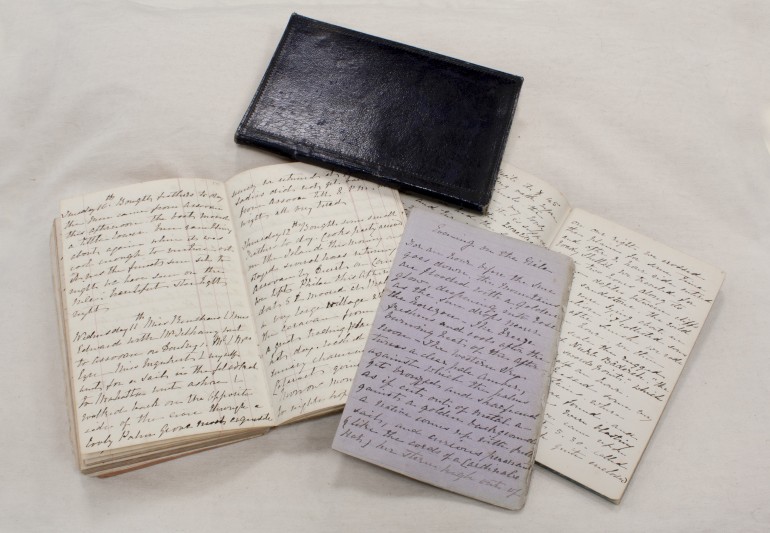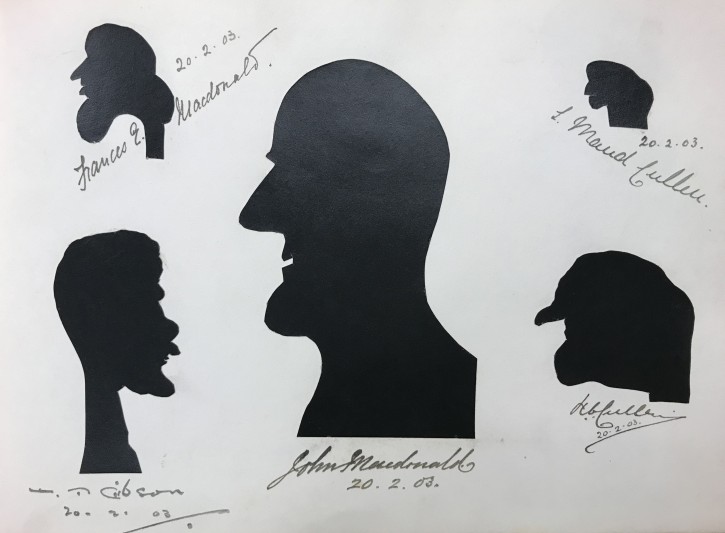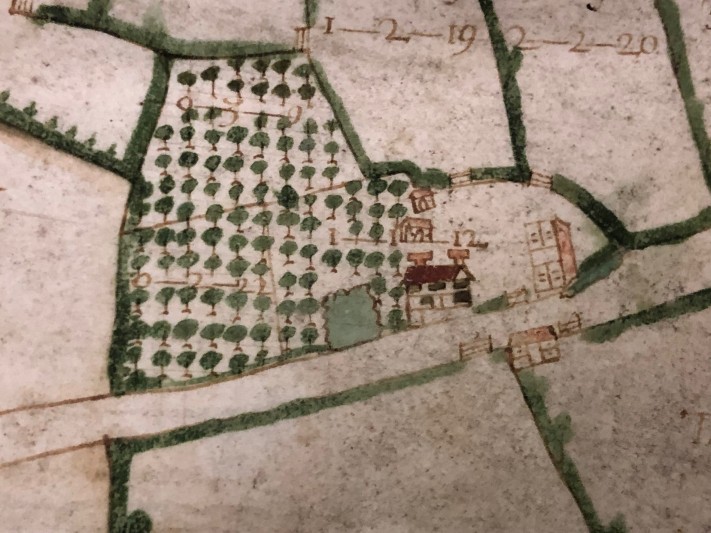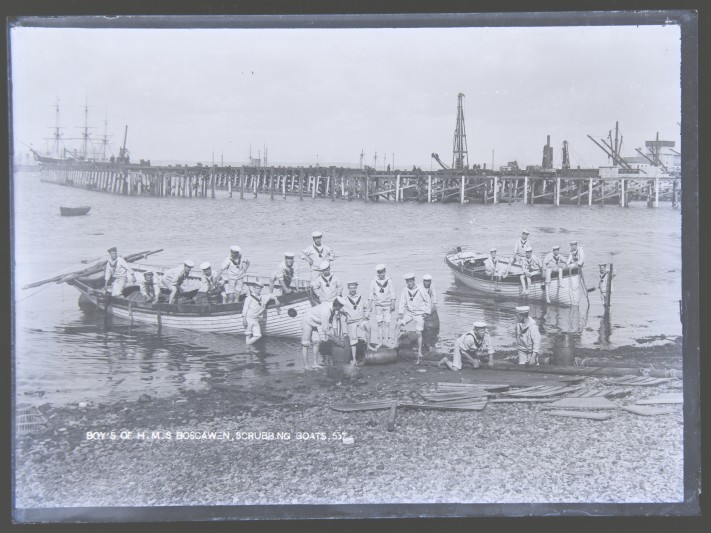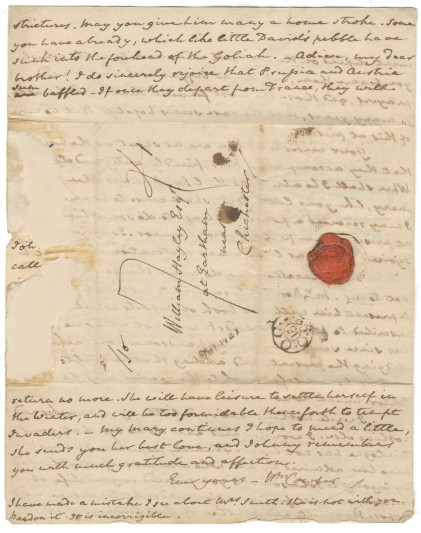Displaying 181 - 190 of 2051
Author: Allan Park Paton (1817 or 1818–1905)
Item date: 19th century
Date acquired: 2019
Grant Value: £3,500 [Smaller Libraries Fund]
Item cost: £3,500
Institution: Inverclyde Archives
Town/City: Greenock
Greenock is often seen as a post-industrial town in decline and is overshadowed by its neighbour, Glasgow. These acquisitions help us explore the literary and artistic side of 19th-century Greenock in an attempt to show this unexplored history.
Sir Joseph Noel Paton was a Scottish artist, illustrator and sculptor. He had a great interest in, and knowledge of, Scottish folklore which is reflected in his paintings. Paton studied at the Royal Academy in London in 1843 and it was during this time that he met John Everett Millais. Allan Park Paton (1817 or 1818–1905), a writer and patron of the arts, was one of the most accomplished and eminent citizens of the 19th-century Greenock. He is probably best remembered as the Librarian of the Watt Library.
Author: Office of John Wolfe Barry
Item date: 1880s
Date acquired: 2019
Grant Value: £1,000
Item cost: £1,350
Institution: Institution of Civil Engineers
Town/City: London
Thanks to the generosity of the Friends of National Libraries, the Institution of Civil Engineers (ICE) was able to obtain a number of drawings relating to the construction of Tower Bridge at auction.
Author: Jenny Lane
Item date: 1873-76
Date acquired: 2019
Grant Value: £4,000
Item cost: £8,125
Institution: Griffith Institute, University of Oxford
Town/City: Oxford
County: Oxfordshire
Jenny Lane (1835-?) was the eldest daughter of George Lane, a market gardener in Pulborough, Sussex. She married twice, firstly to George Collins and then in 1885 to William Norton Western. In her younger years, Jenny was lady’s maid to Lucy Renshaw, travelling companion of Amelia A. B. Edwards. The journals describe in detail their various trips including the 1873–1874 journey through France and Italy, crossing from Brindisi to Alexandria on the Simla, thence up the Nile to Dendara, Karnak, Luxor, Aswan, Philae and Abu Simbel, and the return journey via Port Said, through Lebanon to Damascus, Baalbek and Beirut, Constantinople, Athens, and the Rhine. They contain vivid descriptions of the landscape, weather and peoples, and anecdotes and observations of fellow travellers and places visited. They cover the period from 4 September 1873 to 6 March 1876
Author: Made and compiled by Percy and Mary Bate
Item date: 1903-1948
Date acquired: 2019
Grant Value: £2,475
Item cost: £2,750
Institution: Glasgow School of Art
Town/City: Glasgow
This album is a unique 'visitors' book' compiled by Percy and Mary Bate between 1903 and 1948, and contains 109 silhouettes of their friends and acquaintances hand-cut from black paper. Sitters’ autographs also accompany the majority of the silhouettes.
Bate’s position at the Royal Glasgow Institute enabled him and his wife to cultivate a social circle of key luminaries of the Glasgow art scene of the late 19th and early 20th centuries. This volume therefore provides a unique record of the informal creative networks that flourished in Scotland’s great industrial city during this period.
Author: Giles Burton
Item date: 1638
Date acquired: 2019
Grant Value: £565
Item cost: £1,131
Institution: East Sussex, Brighton and Hove Record Office
Town/City: Lewes
County: East Sussex
No sooner had we collected John Pattenden’s survey from Stowmarket than we were alerted to the appearance on eBay of another 17th-century map.
Author: By John Pattenden of Lamberhurst
Item date: 1647
Date acquired: 2019
Grant Value: £520
Item cost: £520
Institution: East Sussex, Brighton and Hove Record Office
Town/City: Lewes
County: East Sussex
This map shows a sizeable Wealden estate consisting of a substantial yeoman’s house with two barns, agricultural buildings, an extensive orchard in three sections and 180 acres of land and woods, their names and acreages indicated in each parcel. The landscape is liberally dotted with ponds and pits, the result of the extraction of marl and iron ore. Typically of Wealden surveys of this period, the estate is mapped with south at the top and north at the bottom, confirming that in Sussex, men’s mental picture of their environment was focussed on the coastal plain and the sea and not on London, as would gradually become the case as communications improved. The accuracy of the survey is such that, despite extensive boundary-changes, each of the fields can still be readily plotted on a modern map.
Item date: 19th century
Date acquired: 2019 (grant awarded in 2018)
Grant Value: £20,000
Item cost: £684,000
Institution: Durham University Library
Town/City: Durham
Lambton was widely acknowledged in his lifetime as one of the foremost political figures of his generation. He was very well connected, regionally, nationally and internationally, through familial, personal and professional relationships; and his role in the campaign for reform placed him at the centre of English politics. Lambton is best known as one of the key figures responsible for the Great Reform Act of 1832.The most important section of the archive relates to this central concern of his life. The papers, including many hundreds of letters, drafts of speeches and other documents, provide a detailed insight into the politics of the period and the progress of the Bill.
Item date: 19th/20th century
Date acquired: 2019
Grant Value: £1,000
Item cost: £1,550
Institution: Dorset History Centre
Town/City: Dorchester
County: Dorset
A collection of paper and photographic records relating to the naval and maritime history of Portland which was at one time one of the country’s most important naval bases; a base for the Channel and Home fleets. The collection contains a series of photographs, some of them in the form of original glass plate negatives showing the very busy naval harbour and its range of installations, the ships that anchored there and men who crewed them. In addition, and perhaps most interestingly, are the original specifications and pricing for the Portland (outer) breakwater extension, dated 1897. These mammoth structures, now Grade II Listed, which took nine years to complete, were required in part to protect the base against torpedo attack, which by that time was clearly regarded as a serious threat to the integrity of the fleet.
Author: Sylvia Townsend Warner (1893-1978)
Item date: 1931-1977
Date acquired: 2019
Grant Value: £4,000
Item cost: £7,200
Institution: Dorset County Museum
Town/City: Dorchester
County: Dorset
An important series of letters which add detail and colour to the life and times of a significant British writer, in whom there is a resurgence of interest by academic and other researchers. Townsend Warner spent the greater part of her life in rural Dorset with her same-sex partner Valentine Ackland. They were committed communists who supported the Republican cause in the Spanish Civil War (describing in one letter the ‘strange, fairy-tale hospitality’ they received at a Writers’ Congress) and are studied for their political beliefs, literary output and what was, by contemporary standards, unorthodox relationship. Warner wrote a series of novels including Lolly Willowes, Mr Fortune’s Maggot and The Corner That Held Them as well biography and poetry, some of which was co-authored with Ackland..
Author: William Cowper (1731-1800)
Item date: 13 October 1792
Date acquired: 2019
Grant Value: £2,000
Item cost: £3,715
Institution: Cowper and Newton Museum
Town/City: Olney
County: Buckinghamshire
The letter is part of a sequence of correspondence with Hayley, written from Cowper’s house at Weston Underwood near Olney. Cowper was then sixty. In March 1792 Hayley wrote to introduce himself. Both men had been commissioned by rival publishers to work on John Milton. Thanks to the success of The Task, published in 1785, Cowper’s poetry was well known, and so too his melancholy and his rural lifestyle. Cowper had already had several breakdowns, and was nursed back to health by his companion Mary Unwin.

